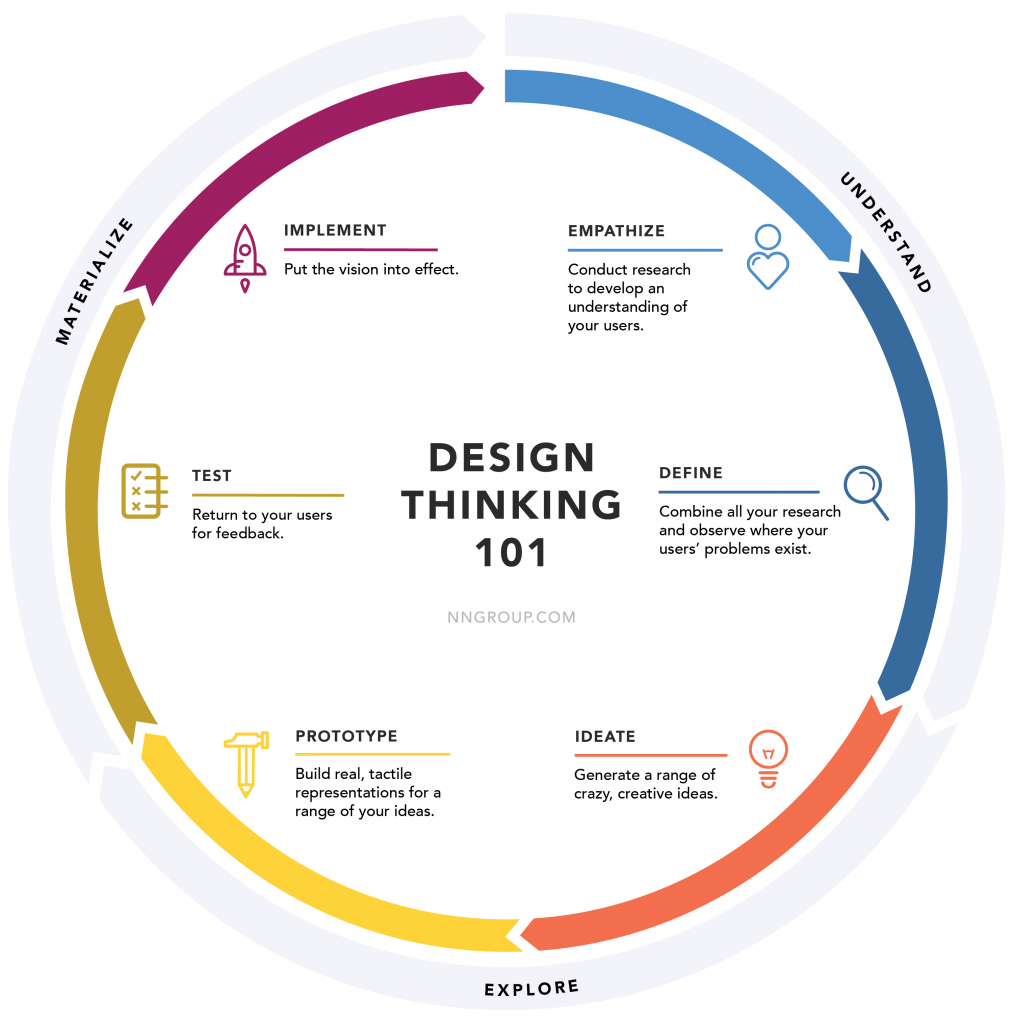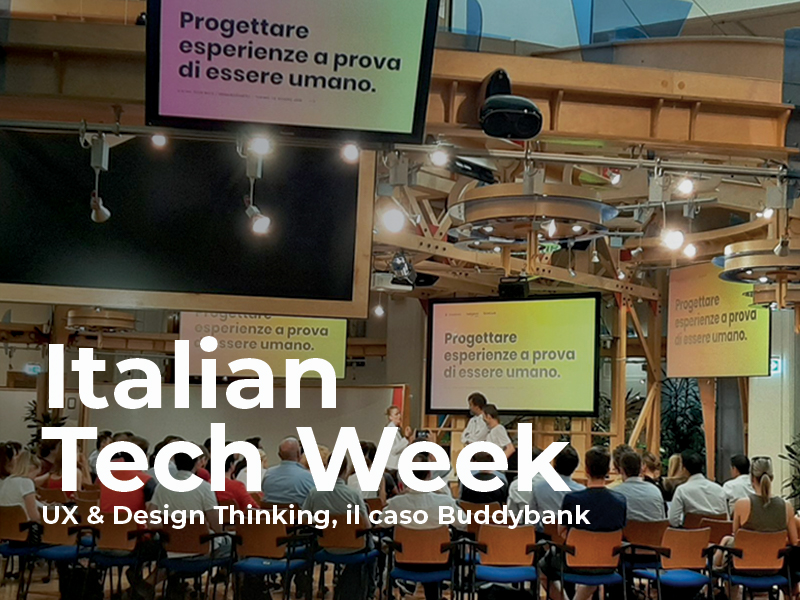Italian Tech week – UX & design thinking: buddybank case
On Friday 28 June, at Unimanagement (the International Training Center of the Unicredit Group), I took part in a meeting, presented by Unicredit in collaboration with Enhancers, where Guido Guaschino and Roberto Maggio introduced the theme of Design Thinking.
Design Thinking
It is a common misconception that design thinking is new. Design has been practiced for ages: monuments, bridges, automobiles, subway systems are all end-products of design processes. Throughout history, good designers have applied a human-centric creative process to build meaningful and effective solutions.
The Norman door
is basically any door that’s confusing or difficult to use. It was named after
(and not by) design guru Don Norman to define this all-too-common design
foible. To determine if a door is “Norman,” ask yourself whether the door makes
sense as you approach it. Grade it pass or fail. If you have to guess whether
to push or pull, the door fails. If you can’t locate a place to push or pull,
the door fails. If you try to push/pull and the door actually slides, the door
fails. It should be immediately apparent how to interact with the door, there
are only a few reasonable options.
Creative is cool, but usability wins every time. Undoubtedly, this new door
would flout very well-established design heuristics — rules of thumb and common
understandings of usability. Occasionally, we encounter a slight variation on
the basics, but once a design starts failing heuristics assessments it becomes
confusing.
At this point, if we generalize the concept, any product that confuses its
user, is difficult to use, or functions counterintuitively is a Norman door of
sorts. We also just call this bad design. Norman
door = bad UX.
Youtube video: https://www.youtube.com/watch?v=fxT_Tdt8Q74

In the last 10 years, design thinking has undergone
innumerable transformations which, while on the one hand have made it
increasingly difficult to define it precisely, on the other have made it
interesting to a growing group of actors outside the design world.
The structure of Design Thinking follows a general flow of necessary steps: 1) understanding, 2) exploring, and 3) materializing.
These include the 6 phases: empathizing,
defining, devising, prototyping, testing and implementing.

Human Centered Design (HCD)
HCD is more than usability: it is the application of a philosophy and a process centered and aimed at identifying the needs of the user, in respect of those of business. It is based on the belief that it is possible to identify the needs and defects of a product through analysis and testing. It is particularly useful for those interested in moving from designing products/services for consumers to designing experiences for people, through a process based on the ability to develop ideas that have an emotional as well as a functional meaning. People who use a product are driven by goals and needs. Designing for them means responding to these motivations and ensuring that they are guided to take actions that are functional to the company’s objectives
Why is HCD rare?
Why in Italy, but also in a large part of the world,
corporate processes are not geared to the needs of the user, with specific
activities such as those listed above, rather than just words? For at least 2
reasons:
1. Because HCD is a relatively young and poorly taught philosophy.
2. Because it is seen as a cost. On the contrary, there are estimates that
indicate that HCD processes benefit from a rapid focus on the right
requirements and solutions, avoid lengthening of time due to impositions or
unproductive discussions, and lead to a satisfactory product in less time.
Introducing the HCD in the design process requires a change of mentality and
procedures in companies, and this makes them more flexible. This is quite
difficult in big companies, because, just as McDonald needs to standardize the
procedures to produce sandwiches of identical average quality, large companies
need to standardize a lot the processes to produce software and sites of
standard quality whatever the training and the degree of competence of the
employees. However, adopting HCD also helps large companies to evolve and to
question their own rigidities.
Buddybank
Buddybank has been presented, and it is proposed itself as: “First digital and conversational bank model”. The target to which this type of service is proposed, in fact, is a young clientele, accustomed to using their smartphone daily and exploiting its various potential uses.
Technology has made us connected. We demand from every service intuitiveness, immediacy and gratification. These three points are essential to achieve when creating a product.
An analysis of attitudes and buying behaviors was carried out which showed that consumption habits are transversal but when the account is opened the digital attitude brings out the differences: Teens and Young Adults choose emerging digital brands such as Hype, Satispay, Paypal, Revolut. Adults, Matures and Seniors change Universal banks such as BCC, BNL, Findomestic. Following this survey has been developed Buddybank, an app that keeps you connected by establishing a relationship of trust with your bank that accompanies us during every type of operation of our daily life.
Modular current account, instant loans, MasterCard debit card, World Elite Black credit card, Apple Pay and a 24/7 Concierge messaging service for banking and lifestyle needs accessible via chat and voice messages ”.
One factor that makes Buddybank effective and innovative is the relationship with the customer. It is managed in a personalized way via chat and directly through the app: “Interaction with banks is sporadic today, the bank is an important and safe place but we do not find it cool, so it is important to use a new mode of communication, exclusively via app “.
Fabrizio Simonini – Unicredit, Head of NW region.
Giulia, ERRE LAB


